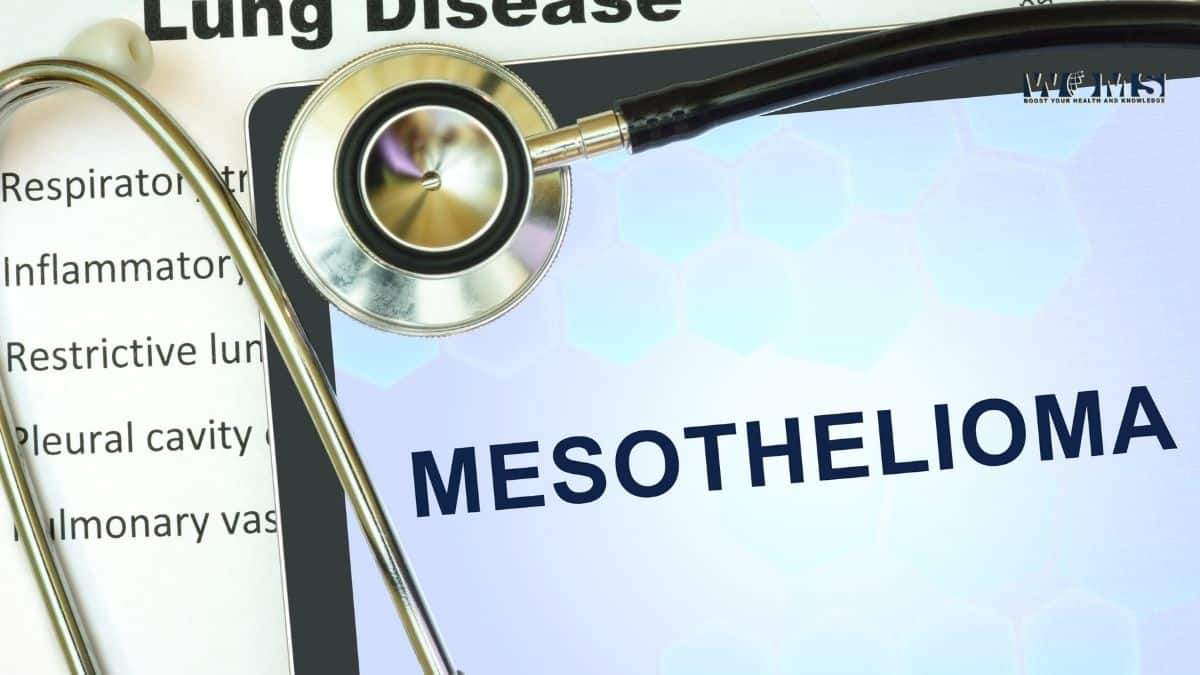10 Mesothelioma Treatments- Old and New Treatments

Mesothelioma is rare cancer that affected over 30,000 people globally in 2020. Over 26,000 patients succumbed to this disease, accounting for 45 percent of all new cases in Europe in 2020. Mesothelioma treatments are present for curing the disease.
The fact that mesothelioma is still considered uncommon has slowed the advancement of therapeutic alternatives in recent decades.
There is currently no definitive treatment for mesothelioma, but several new therapies promise to enhance cancer treatment.
There is also the possibility that further study into one of these developing therapy methods will lead to a cure. Patients seeking an emerging treatment should speak with a medical expert to see if it is appropriate.
Goal of Treatments
The fundamental goal of mesothelioma therapies is to stop cancer cells from growing and spreading. Doctors are primarily concerned with preventing mesothelioma from spreading (metastasis) and preventing cancer from progressing to the late stages.
To improve their quality of life and increase life expectancy, mesothelioma sufferers must first prevent metastasis.
Treatments differ depending on the type of mesothelioma. Palliative care is used to treat end-stage mesothelioma, finding measures to make the patient comfortable and pain-free.
Mesothelioma therapies in the early stages are frequently aggressive, requiring surgery to cut into the affected area and remove the tumor.
Following surgery, multimodal treatment involving chemotherapy or radiation is commonly used to eradicate any leftover cancer cells that doctors could not remove during surgery.
You can get more details about mesothelioma from www.mesotheliomahope.com and an in-depth evaluation of old and new treatments.
Treatment Strategy
With the support of funds and clinical trial breakthroughs, mesothelioma treatments are progressing. The types of treatments a patient receives and how soon after diagnosis can significantly impact their prognosis.
Mesothelioma specialists use the most up-to-date research to build personalized treatment regimens for each patient. Treatment strategies usually involve numerous treatments used at different periods to achieve the best results.
To provide the most well-rounded treatment plan, doctors frequently combine two or more conventional and modern approaches. Depending on the circumstances, mesothelioma specialists may even offer a combination of three mesothelioma therapies.
It’s fascinating to consider that mesothelioma has evolved from old to modern treatments, and it is making significant attempts to improve patients’ lives. The three traditional mesothelioma treatments, as well as the rest seven emerging novel treatment options, are as follows:
Surgery
Surgeons remove Mesothelioma tumors in the lungs, abdomen, or heart using targeted, specialized surgical methods. Extrapleural pneumonectomy and pleural effusion are the most common operations for mesothelioma patients.
Surgeons may remove a malignant lung and specific portions of the chest lining and adjacent lymph nodes during an extrapleural pneumonectomy.
Pleural effusion is a complicated operation that involves draining extra fluid from the lungs’ lining. Surgeons must empty the lungs and reassemble the layers and lining during this treatment.
The effectiveness of each procedure is now under debate among mesothelioma doctors and researchers. Many specialists believe that extrapleural pneumonectomy is excessively invasive and dangerous.
Chemotherapy
Chemotherapy is usually given as an infusion using a needle placed into a vein under the skin. The medications can also be administered through a catheter and inserted into a vein in your chest. Anti-cancer drugs with high potencies flow through the bloodstream, killing mesothelioma cells. Doctors administer chemotherapy for mesothelioma in 3-4 week cycles with a rest interval. This break allows healthy cells to regrow in between treatments. Depending on the precise treatment ordered by your doctor, a single chemotherapy session could last anywhere from a few minutes to several hours.
Radiation Therapy
High-energy radiation beams are utilized to reduce mesothelioma by altering the DNA of the cancer cells. Radiation therapy can be used to decrease mesothelioma tumors in a non-invasive approach. Advanced forms of radiation can be exceedingly precise and hit tumors from various angles, increasing the success rate of therapy.
Gene Therapy
Designed to fix genetic mutations by providing healthy genes to the patient. Gene therapy is a relatively new treatment in which modified genes are introduced into the body. Gene therapy makes mesothelioma-affected malignant cells more sensitive to other cancer treatments.
P53 Restorative Drugs
The human tumor protein p53 is a gene that can be exploited to treat cancer. It can repair damaged tissue as well as kill malignant cells. To learn more about this treatment, researchers need to study how the gene behaves when stimulated to kill the Mesothelioma cells and repair the damages.
Immunotherapy
It improves the patient’s immune system, making them more capable of fighting mesothelioma. The body’s immune system targets and fights malignant cells in immunotherapy. It may also suppress the immune system of a patient to allow other treatments to take effect. Despite substantial research, sixteen years have passed since the FDA approved pemetrexed for mesothelioma treatment and the nivolumab/ipilimumab combo as a first-line of treatment. Its lack of popularity is that the treatment works best if the cancer is detected in the initial stages. Secondly, physicians prefer to avoid using it due to its side effects.
Photodynamic Therapy
Increases the susceptibility of cancer cells to light. A photosynthesizing substance is used in photodynamic treatment. Singlet oxygen is created when this substance is coupled with light wavelengths to kill cancer cells. PDT is useful in treating a variety of cancers, including mesothelioma.
Surgery for Mesothelioma After Radiation Therapy (SMART)
Before surgery, radiation therapy is used. The small mesothelioma cells generally left behind after surgery are eliminated throughout the chest cavity using the SMART approach. Seeding, which occurs when mesothelioma cells travel about after surgery and begin to multiply in distant areas, can be avoided by killing tiny cells before surgery.
Virotherapy
In virotherapy, viruses target and kill cancer cells. It’s frequently used with other treatments, like immunotherapy.
Cryotherapy
Cryotherapy is a method of killing cancer cells by freezing them. Although it is a new mesothelioma treatment, it has been used for years to treat other diseases.
Conclusion
Treatment for mesothelioma has made a lot of progress in the last few decades. When experts first started looking into mesothelioma, all they knew was that the disease was linked to asbestos.
There was little information about how the condition developed, and there were few therapeutic possibilities.
Biological and cell therapies have a lot of promise. They may even lead to a cure, and innovative research may provide doctors with novel ways to combat abnormal cells caused by asbestos exposure.
Chemotherapy, photodynamic therapy, gene therapy, and immunotherapy push the limits of what is achievable today. Furthermore, they are extending the lives of mesothelioma patients.




